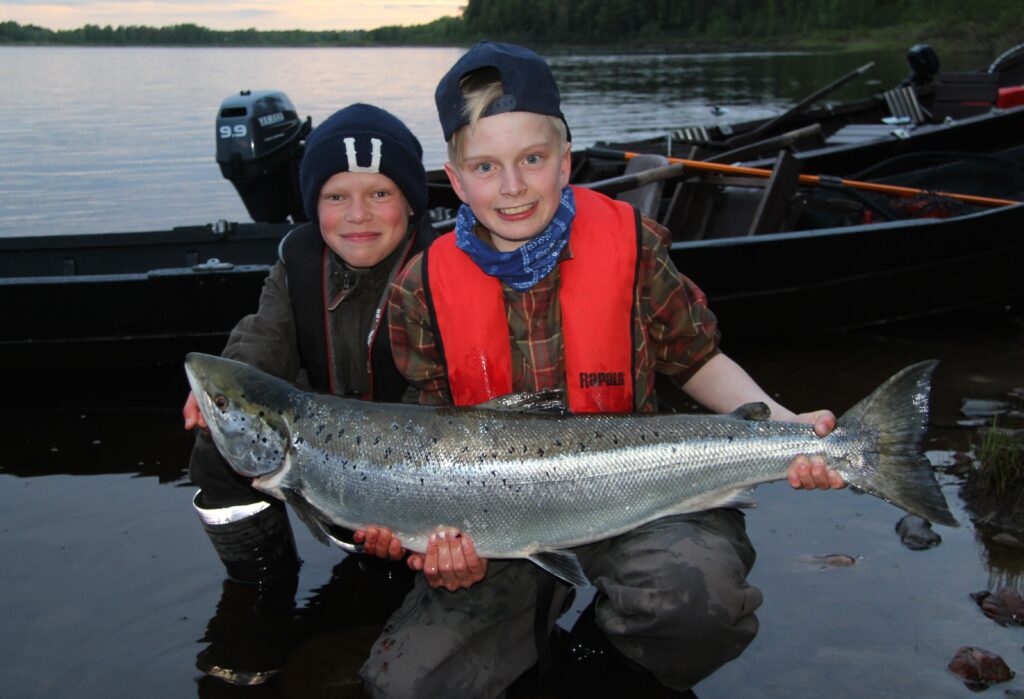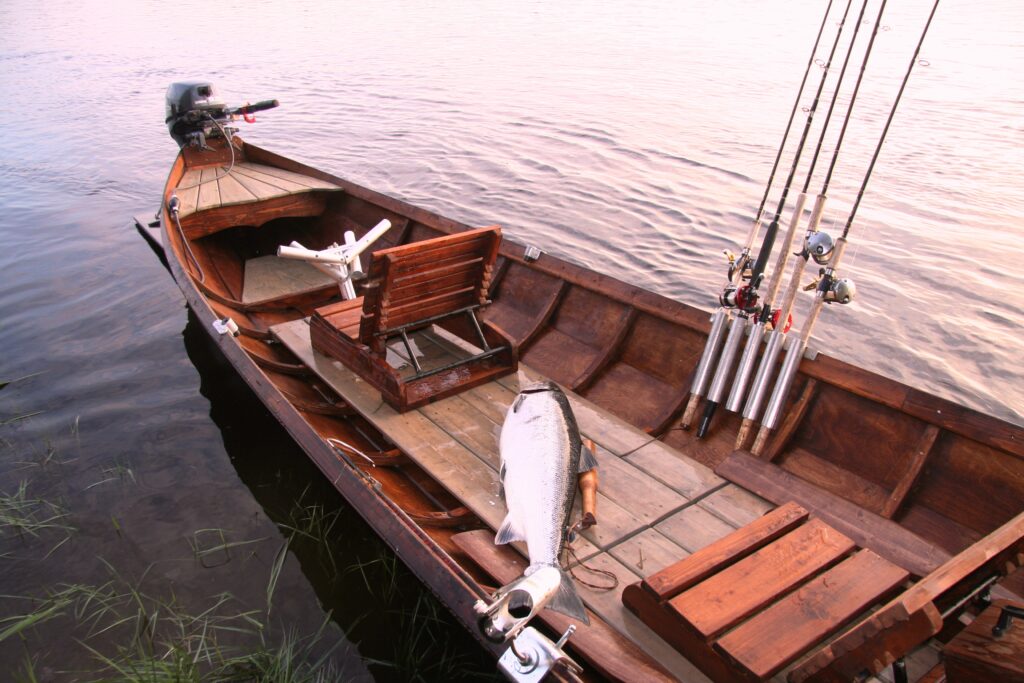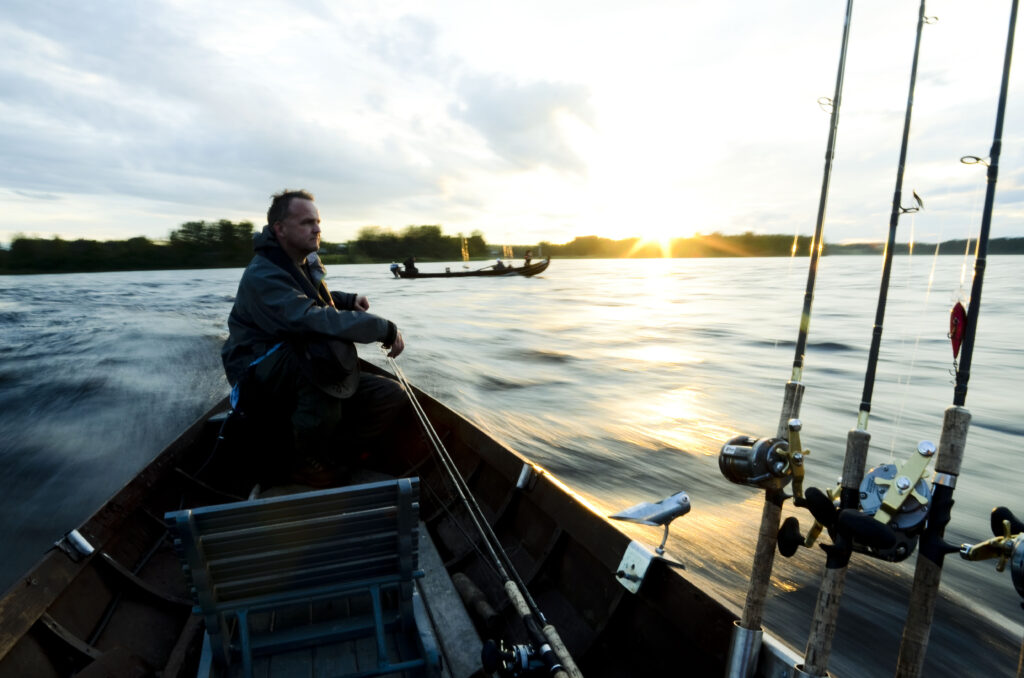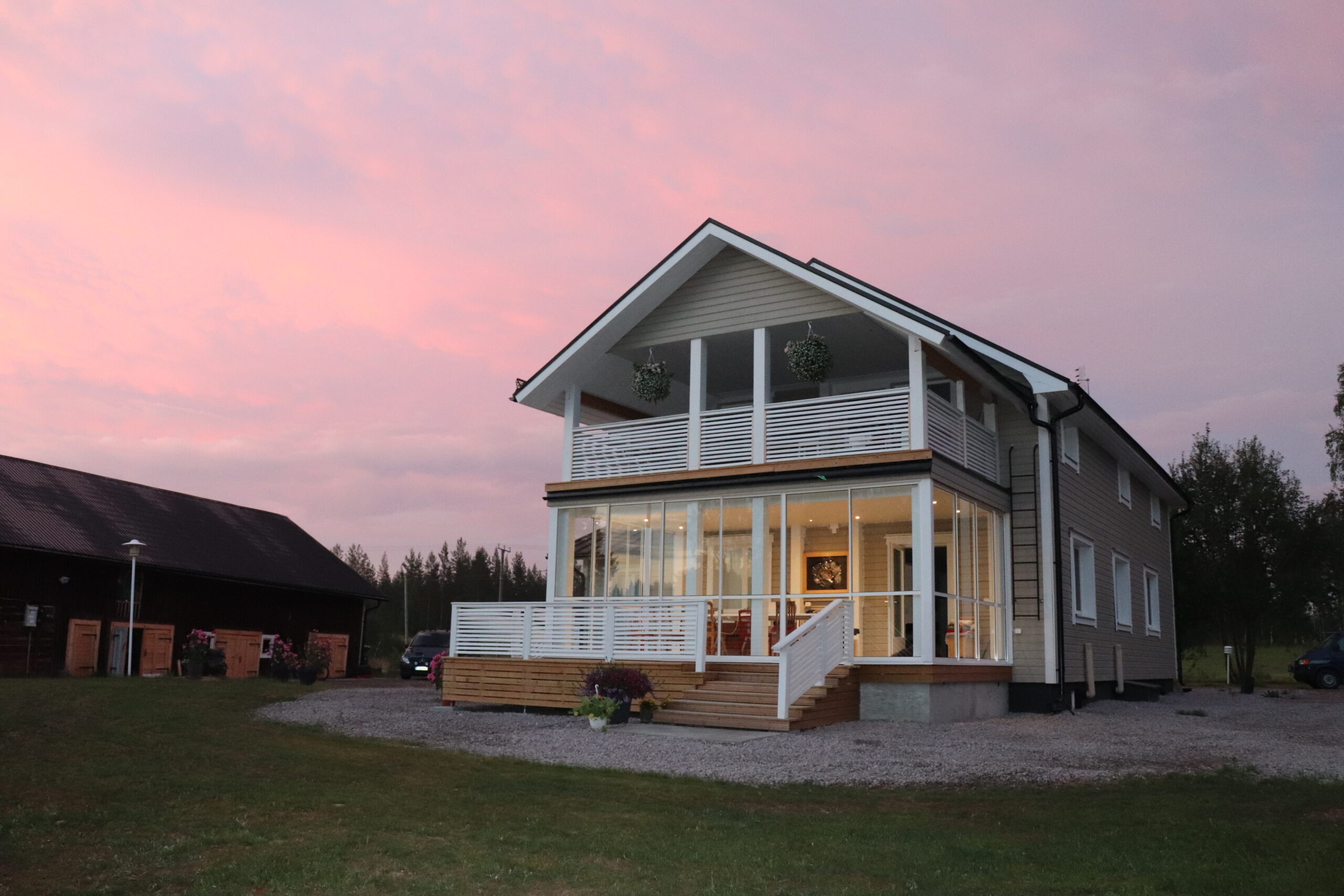Fishing in the most traditional way
Boat fishing or harling on the Tornio river and many other salmon streams in northern Finland is the most traditional way of salmon fishing with a rod. Over the past century, juniper rods and Boca reels have been replaced with carbon fiber rods and trolling reels, but the basic principles of fishing for salmon have long gone unchanged. In the old days, we pushed the boats upstream to set the rods where requested. These days, however, we go upstream with a motor.

Traditional Finnish salmon fishing
People have moved through the great waterways of the north for a long time, and the mouths of big rivers often became the first trading venues and villages, and later towns. Riverboats have moved for centuries, almost as long as there has been traffic along the shores. Riverboats were used for trading, as postal boats, as dyke-fishing boats and net-fishing boats and for other purposes. Over time, rod fishing also became popular, especially with British fishermen coming to Finland, and the Tornio river bore its share of rod fishermen in the late 1800s.
The Tornio River is a really big river and in many areas, it is also very wide. That might be the clearest reason why traditional Finnish boat fishing is so popular for salmon here. In boat fishing, we use traditional river boats, which are long and narrow. They are specially designed for running and turbulent water. With these qualities, river boats are perfect for salmon trolling and driving rapids with a motor. But since the boats are very narrow and the river powerful, you need experience and skills to read the current and use the boat.

Salmon boat fishing rules
Once the starting point is reached, we switch off the engine and take it out of the water. Then we set the lures to the water. There is no rod restriction on the Tornio river, and in accordance with the fisherman’s experience and preference, 3 to 7 rods are placed. The guide serves as a rower and fisherman, setting lures or flies to swim. The boat is rowed a bow upstream so that the rods face downstream, and the fish see the lures or flies long before they can see the boat. In familiar places, the boat will zigzag downstream, and in particularly good places, such as a pit or near large rocks, the rower can spin lures more than once. When the area has been fished, the lures are lifted up, and the guide drives to a new spot, or the group has a coffee break to admire the landscape if the salmon are not biting.
The rower should know the rules for fishing and the principles for movement on the water. On the Tornio river, the catch quota is 1 salmon per fisherman per day. The minimum salmon size is 50 cm. If the fish is released, fishing may continue on the same day. When you move via boat, avoid other rowboats and fishing boats, and join fishing sites quietly. When on the water, always be courteous and practice common sense.
When a rower’s skills carry a lure to the right place and catches the eye of a grand fish, there is the moment that every fisherman is waiting for. The reel begins clacking, the rod dives, the rower begins rowing faster, and a silvery salmon is on the line. However, you shouldn’t be too hasty in your big moment. First, the fisherman pulls in the empty lines, while the rower keeps the fish line tight, and only when all the other rods are up, is it time to begin reeling in your catch. The brake should not be kept so tight that the salmon cannot go wild nor can it unhook its mouth. After an enjoyable struggle, the rower brings the salmon into the net and the celebration can begin. With our guides, it is an unforgettable experience and a wonderful hobby that you can immediately begin practicing!

Gear and equipments
When fishing for salmon, you can’t skimp on equipment. The Tornio River is a great river, and the salmon that migrate here are very large. Our experienced guides use only high-quality and proven equipment.
Rod/Reel: While boat fishing for salmon, we use Shimano Tekota reels and Shimano Beastmaster salmon rods. We usually use 6 or 7 rods with different lengths. In the middle, we put a 2.7 meter long rod, then a 3 m rod, and on the outsides, 3.6 m long rods or possibly a second fly rod. In the middle, it’s also possible to keep a short 2 m spoon lure rod.
Lines: For salmon, the best line is still nylon or a traditional monofilament. It will withstand abrasion and is resilient to unexpected movements by fish or fisherman. The right line weight for salmon fishing is at least 0.40 mm. However, the thickness of line is also greatly affected by fishing location. If you are fishing low or rocky waters, you should use up to 0.50 mm thick lines. Our boat guides fish mostly in backwaters and small rapids, so thinner and more delicate lures on 0.40 mm line are the Naamisuvanto guides’ selection of choice when fishing for salmon. Metal lures are an exception. These lures swim better with a thick line because it keeps the lures swimming smoothly. The suitable line thickness for metal lures is 0.60 mm. We have successfully used Rapala Sufix monofilaments for many years.
Boats: We use special riverboats when fishing for salmon that have been developed over centuries for the river and its characteristics. Our riverboats are narrower and shorter than lake boats. The lightweight boats feel rickety near the shore, but they come alive with the currents. Naamisuvanto has 5 guideboats and 15 rental boats. Some of the boats were made by Petri’s father-in-law, and the newer boats are made by local craftsman Arto Kivilompolo and his son Juho Kivilompolo. Our rental boats are 5.5 to 6.5 m long and can carry 2-3 adults. Our guideboats are 7.5 m long and can carry an additional two adults with the guide. The boats have 4 – 15 horsepower engines but switch to rowing once upstream. Most of our engines are Yamaha, with a couple of Suzuki too.
YOU MIGHT BE ALSO INTERESTED
Salmon Fly Fishing
Feel the strength of the mighty Tornio river and catch the salmon of a lifetime.
Fly Fishing by Boat
Unique opportunities for salmon fishing at the big and mighty River Tornio.

BIG RIVER, BIG FISH, BIG FAMILY

GUIDED FISHING WITH EXPERTS


